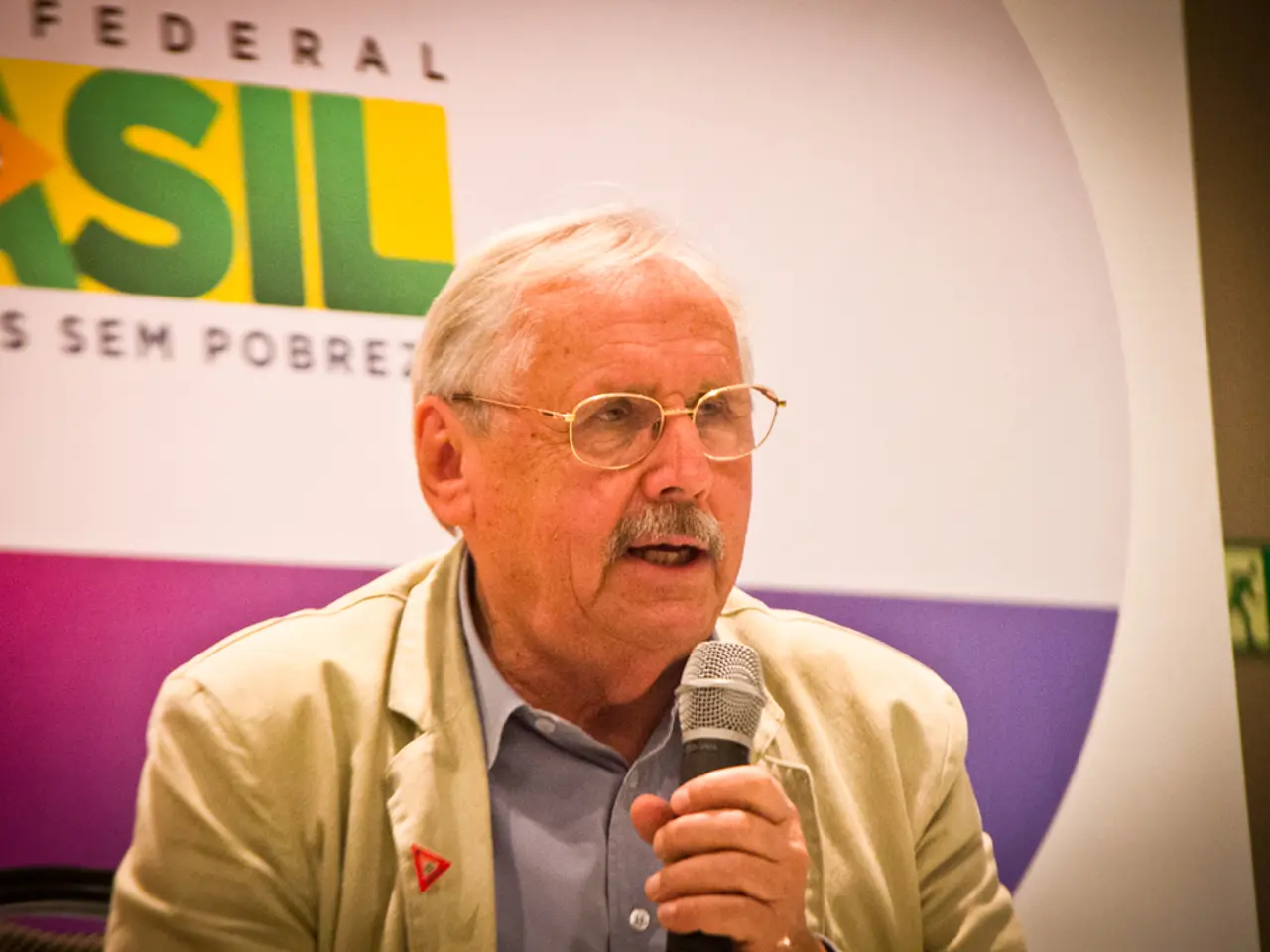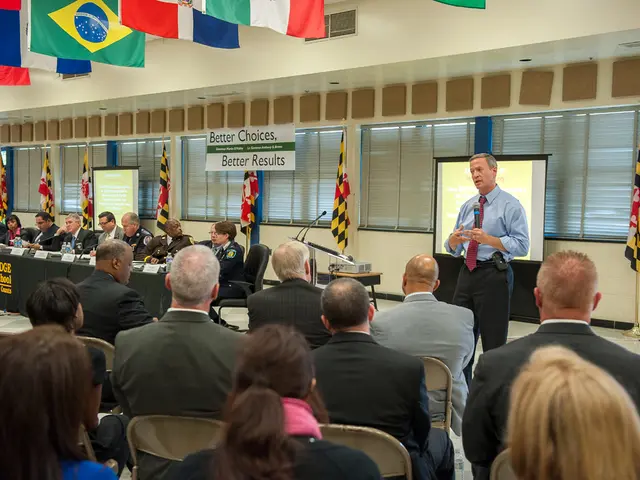If enforcement actions by the federal government are enacted in New York City
In a series of controversial moves, U.S. Immigration and Customs Enforcement (ICE) has been implementing a new enforcement strategy across several American cities, raising concerns about civil liberties, economic impacts, and the potential for escalating tensions.
In Los Angeles, teams of heavily armed and masked agents have been conducting checkpoints and raids for months, focusing on workplaces and areas where undocumented immigrants are thought to congregate, including Home Depots. This approach, which has been criticised for its indiscriminate nature, has led to multiple federal judges finding that the sweeps are unconstitutionally profiling people based on factors like race and location.
An analysis of ICE data showed that an average of 88 people were being detained per day in a three-week period before a temporary restraining order came down. In addition to suspected immigration violators, federal agents arrested over 160 protesters, most of whom were not charged with any violent offense.
The administration's immigration enforcement tactics have faced multiple lawsuits and some court losses amid cratering public support for its actions. This has not deterred ICE, however, as they are now going on a hiring blitz.
The strategy has also spread to Washington, D.C., where federal officers and soldiers have been deployed, engaging in hundreds of indiscriminate stops, checkpoints, and arrests. Immigrant-heavy neighborhoods in the capital are reportedly deserted as residents fear the indiscriminate enforcement.
Unlike the LA deployments, the rationale in Washington, D.C. has expanded beyond immigration to general criminal enforcement. This expansion has caused concern among many, as it seems to further blur the lines between immigration enforcement and regular law enforcement.
In New York City, agents in ICE's field office are under pressure to increase arrests. So far, enforcement in the city has been largely confined to arrests at the immigration court at 26 Federal Plaza. New York City Council Member Alexa Avilés has expressed concern about a lack of specifics from Mayor Eric Adams' administration regarding planning for a potential federal response in the city.
The enforcement strategy has had, and probably will have, huge deleterious impacts on the city's economy. The constant presence of these operations has caused people to pull back from aspects of public life, with parents not dropping off kids at school and once-bustling public areas sitting empty.
Trump and his anti-immigration architect Stephen Miller have used Los Angeles as both a testing ground and showcase for their immigration and speech crackdown. Miller reportedly urged field agents to focus on such locations instead of just targeting criminals.
The deployment of troops themselves has reportedly questioned their role in Los Angeles. This has led to a growing chorus of criticism from civil rights groups, local politicians, and community leaders, who argue that these tactics are not only unconstitutional but also counterproductive to building trust between law enforcement and immigrant communities.
As these enforcement tactics continue to unfold, other jurisdictions have reason to worry about a franchising of the LA model, with New York City being an obvious and prime candidate. The future of immigration enforcement in the United States remains uncertain, but one thing is clear: the stakes are high, and the impacts on communities, economies, and civil liberties could be profound.
Read also:
- visionary women of WearCheck spearheading technological advancements and catalyzing transformations
- Nursing home, St. Luke's, bids farewell to Beate Kalowsky after 34 years of service.
- California Senator Kamala Harris announces she will not seek the governorship in 2026, instead hinting at future professional ventures.
- Surprise in the restroom: Rodents emerging from the toilet bowl - "Preventive Measures"








